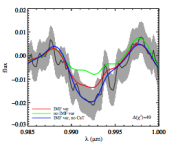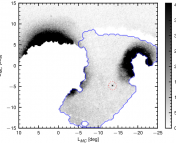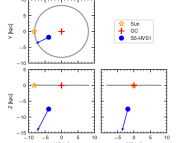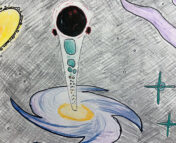Title: The JWST Resolved Stellar Populations Early Release Science Program II. Survey Overview
Authors: Daniel R. Weisz, Kristen B. W. McQuinn, Alessandro Savino, Nitya Kallivayalil, Jay Anderson, Martha L. Boyer, Matteo Correnti, Marla C. Geha, Andrew E. Dolphin, Karin M. Sandstrom, Andrew A. Cole, Benjamin F. Williams, Evan D. Skillman, Roger E. Cohen, Max J. B. Newman, Rachael Beaton, Alessandro Bressan, Alberto Bolatto, Michael Boylan-Kolchin, Alyson M. Brooks, James S. Bullock, Charlie Conroy, M. C. Cooper, Julianne J. Dalcanton, Aaron L. Dotter, Tobias K. Fritz, Chris Garling, Mario Gennaro, Karoline M. Gilbert, Leo Girardi, Benjamin D. Johnson, L. Clifton Johnson, Jason Kalirai, Evan N. Kirby, Dustin Lang, Paola Marigo, Hannah Richstein, Edward F. Schlafly, Judy Schmidt, Erik J. Tollerud, Jack T. Warfield, Andrew Wetzel
First Author’s Institution: Department of Astronomy, University of California, Berkeley, CA 94720, USA
Status: Submitted to AAS Journals
Just like people, stars can be grouped into distinct stellar populations, where a given stellar population refers to stars with the same age and chemical properties. Examples of different populations include young red supergiants (25 million years old), intermediate-age asymptotic giant branch stars (1 billion years old), and the most ancient red giant branch stars (>4 billion years old). To group a star into a stellar population, we first observe its color, luminosity, and spectral features. Then, we can infer how this population of stars formed. This field of astronomy is known as the study of stellar populations.
However, resolving these stars and measuring their luminosities has historically been difficult, especially for distant galaxies farther than 1 Mpc away from us (or about 3 million light years). This changed with the Hubble Space Telescope (HST), which completely revolutionized and improved observations of stellar populations. Compared with its predecessors, HST had better sensitivity and angular resolution (see Figure 1 for an example of improved sensitivity and resolution). With HST, stellar populations could be studied even out to 40 Mpc! However, HST was designed to target the optical wavelengths, whereas, JWST probes NIR wavelengths. NIR observations have the advantage of decreased effects of dust extinction, because NIR photons do not interact as strongly with dust grains in the interstellar medium.

This paper covers one of the first studies that analyzed the resolved stellar populations with JWST. In particular, this project was one of the JWST ERS projects, where teams of astronomers had the opportunity in 2017 to propose to be among the first to receive JWST data. In return, the selected teams would make their data public and help release tools to analyze data. This team, the JWST Early Release Science Program for Resolved Stellar Populations, aimed to help enable resolved star science to the broader community by developing software (the DOLPHOT NIRCam software) to extract photometry from JWST imaging. Photometry is measuring the brightness of stars in an image by counting the incoming photons from a given object. This team also aimed to test the performance of this software, make their photometry public, and then guide the community on best-use practices for DOLPHOT.
The JWST observations for this study were acquired in July and August of 2022. The team opted for a 4-point subpixel dither pattern. “Dithering” in astronomy means to shift the telescope slightly between exposures, so that when the images are stacked, any transient objects in the image (like cosmic rays or satellite trails) can be removed when all the images are stacked. Subpixel dithering can increase the resolution of an image by shifting the dithers in subpixel increments. Then, when the images are stacked, the pixel resolution can be increased. In total, the team observed three objects: M92, Draco II, and WLM, which are discussed below. The images for all three targets are shown in Figure 2.
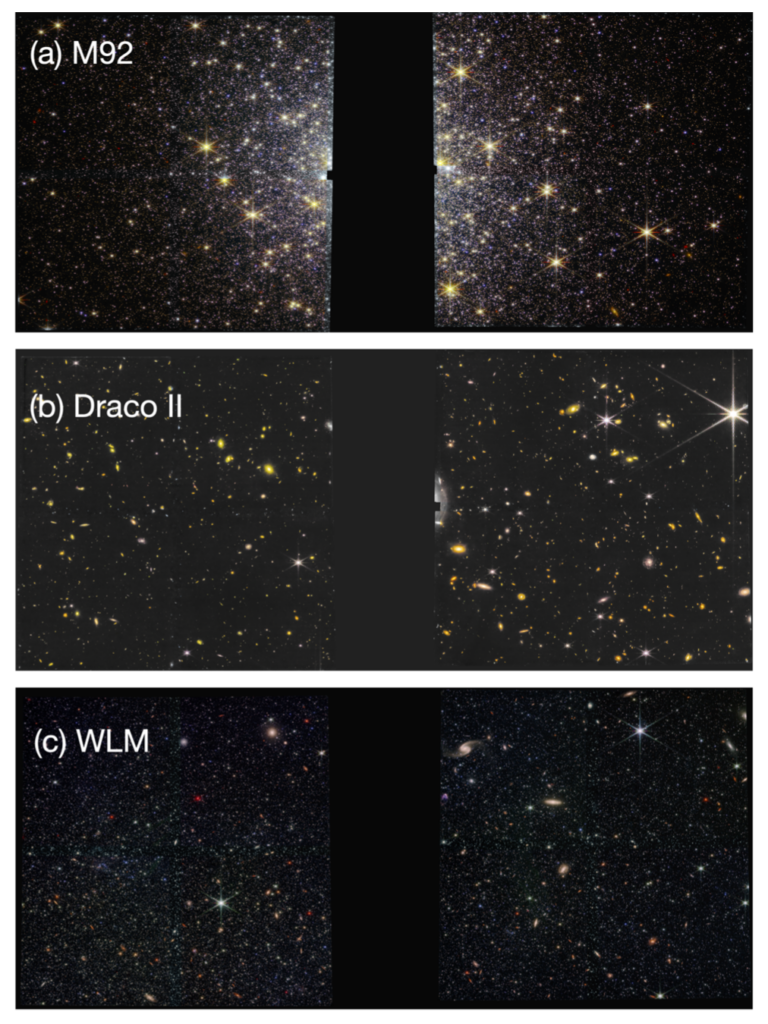
M92: The first target they observed was M92. M92 is a metal-poor globular cluster, which is a cluster of stars (ranging from ten thousand to a million stars) that are gravitationally bound in a spherical shape. Globular clusters are usually found in the outer parts of galaxies and are the most massive types of star clusters. The Milky Way has around 150 known globular clusters. They are among the oldest objects in the Universe, and are one of the ways we can put a lower bound on the age of the Universe. For example, the oldest known globular cluster is around 11 billion years old, meaning that is at least how old the Universe is. Usually globular clusters are smaller than 20 pc large in diameter (the Milky Way is about 30,000 pc in comparison).
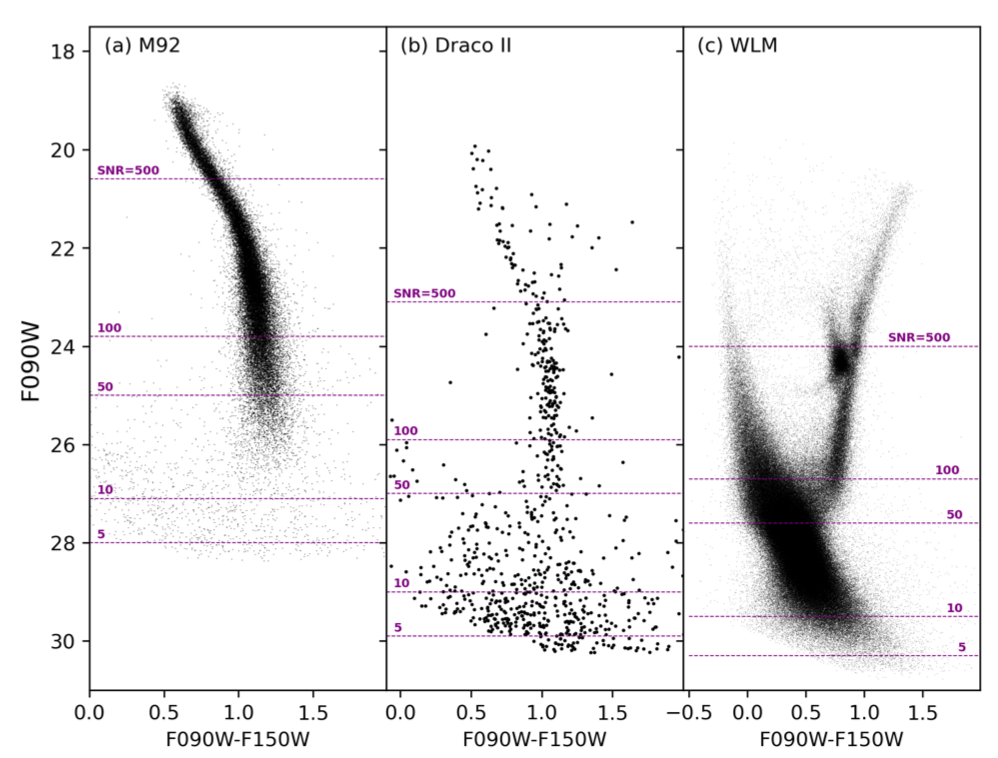
One way of learning about stellar populations is through a color magnitude diagram (CMD). Color-magnitude diagrams are the “observer’s version of H-R diagrams,” where instead of luminosity vs. temperature, we have the proxies of magnitude vs. color. The CMD shown in Figure 2 is the deepest one of M92 ever, meaning we can see the faintest stars ever observed in M92 at around F090W = 28 mag in Figure 3. In fact, these stars are likely the smallest objects that can sustain hydrogen fusion, at around 0.08 M⊙. Smaller mass objects cannot become stars as they are not massive enough to ignite hydrogen fusion in their cores. Note that on the main sequence, the luminosity of a star is well-correlated with its mass (where brighter stars have larger masses).
Draco II: Second, the team observed the ultra-faint dwarf galaxy Draco II. At about 20 kpc away, Draco II is one of the closest Milky Way satellite galaxies. Satellite galaxies are smaller galaxies gravitationally bound to a more massive, main galaxy. In the same way that planets orbit and are gravitationally bound to our sun, the satellites of the Milky Way are gravitationally bound and orbit around it. The Milky Way has around 59 small galaxies gravitationally bound to it, the largest being the Large and Small Magellanic Clouds. The main difference between globular clusters and satellite galaxies is that satellite galaxies also have dark matter components. Ultra-faint dwarf galaxies, like Draco II, are a special class of galaxies that contain fewer than 100,000 stars, making them the faintest galaxies in the Universe.
The CMD shown in Figure 3 of Draco II is the deepest CMD of a galaxy outside the Milky Way, and also contains photometry from the lowest-mass stars observed outside the Milky Way at around 0.09 M⊙.
WLM: The third target was the star-forming dwarf galaxy Wolf-Lundmark-Melotte (WLM), which is about 1 Mpc away. Dwarf galaxies are smaller galaxies that contain up to a few billion stars (in comparison, the Milky Way has around 300 billion stars). The color magnitude diagram of WLM is also the deepest CMD of WLM that exists. In WLM, we can see a wider variety of stellar populations than in M92 and Draco II. For example, we can see the red giant branch sequence (low-mass stars with helium cores and hydrogen fusing shells), extending from about F090W = 2 mag to F090W = 21 mag and a color of F090W – F150W > 0.7 mag. We can also see core-helium burning stars at around F090W = 24 mag and a color of F090W – F150W = 0.7 mag.
In conclusion, this exploratory paper clearly establishes JWST as the premier telescope for observing resolved stellar populations. The authors also developed a new software to extract photometry from JWST imaging, called DOLPHOT, and have made it publicly available. The color magnitude diagrams for the three targets in this program are the deepest in existence for each object. More science is to come from JWST, and this paper is only the tip of the iceberg in using stellar populations to learn about dark matter, near-field cosmology, stellar evolution, and much more!
Astrobite edited by Lindsay Demarchi
Featured image credit: The JWST ERS Program for Resolved Stellar Populations

